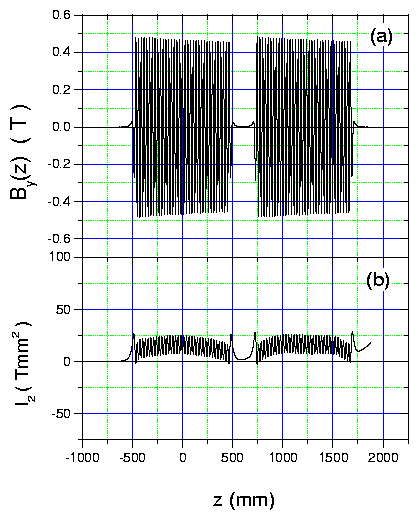|
If the FEL works with maximum power the energy factor g of the electrons decreases by Dg = g/2 Nu (for the first harmonic) along the electron path due to the interaction of the electron beam with the electromagnetic field, where Nu = 68 is the total number of magnetic periods in the two undulator units [1]. The electron energy changes continuously from the undulator entrance to the exit leading to a resonance wavelength l(z) which depends on the coordinate z along the undulator
Within a certain interval of l this effect can be compensated by differentially increasing the gap, and hence decreasing the magnetic field along the undulator. To compensate the energy loss dg by a reduction dB of the magnetic field one has to ensure
from which follows
For hybrid undulators, the Halbach equation allows one to estimate the widening of the gap g needed for the variation dB of the field corresponding to equation (3). Figure 1 shows the effect of field tapering in both sections of the undulator U27, which would be used in a situation typical for high intensity lasing.

Fig. 1 (a) Measured field distribution By(z)
in the middle plane for a gap width g = 12 mm and a tapering of 0.3 mm
on the exits of both undulator sections.
References
[1] P. Gippner, E. Grosse, W. Seidel, J. Pflüger, this Report
|